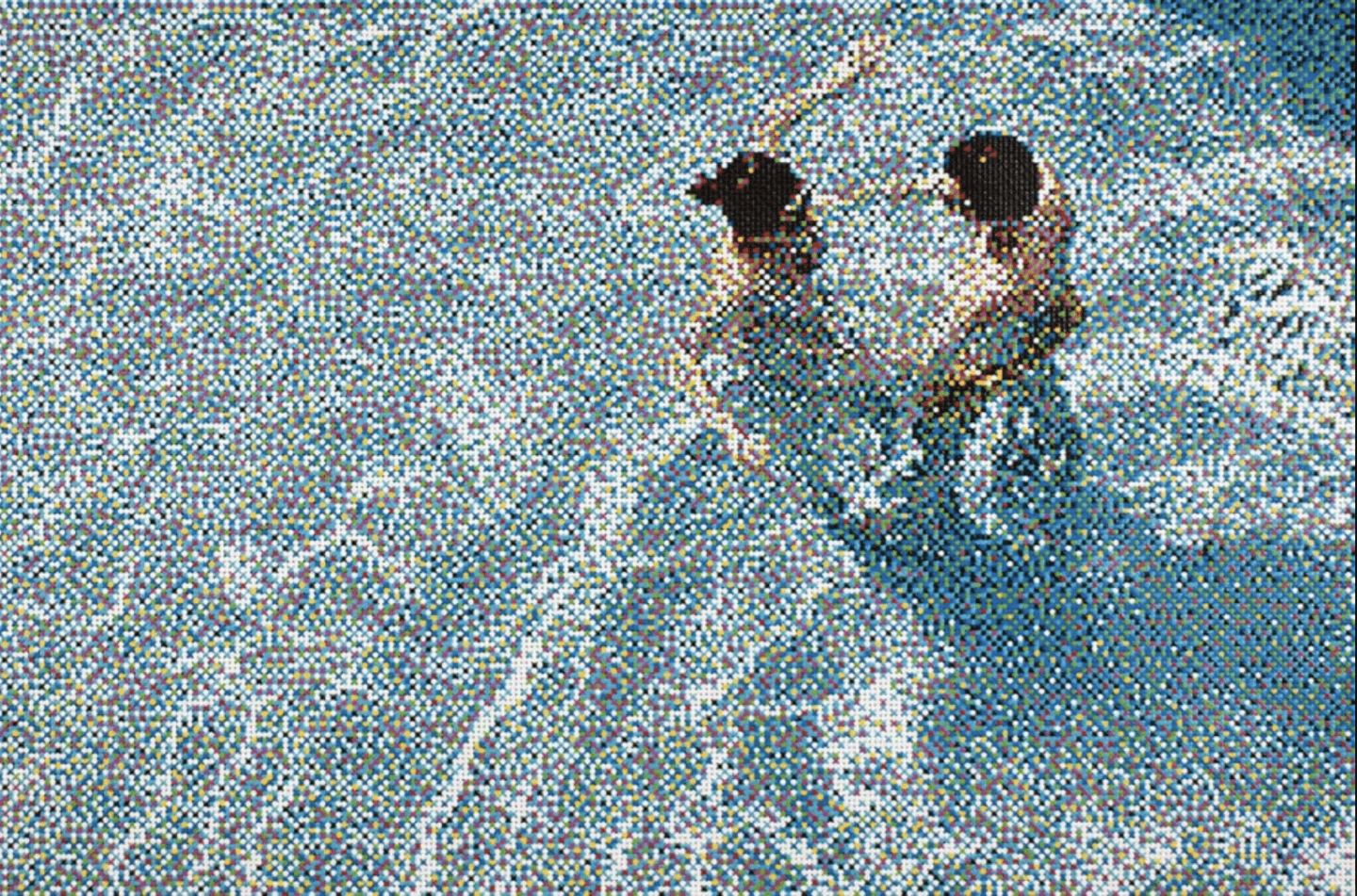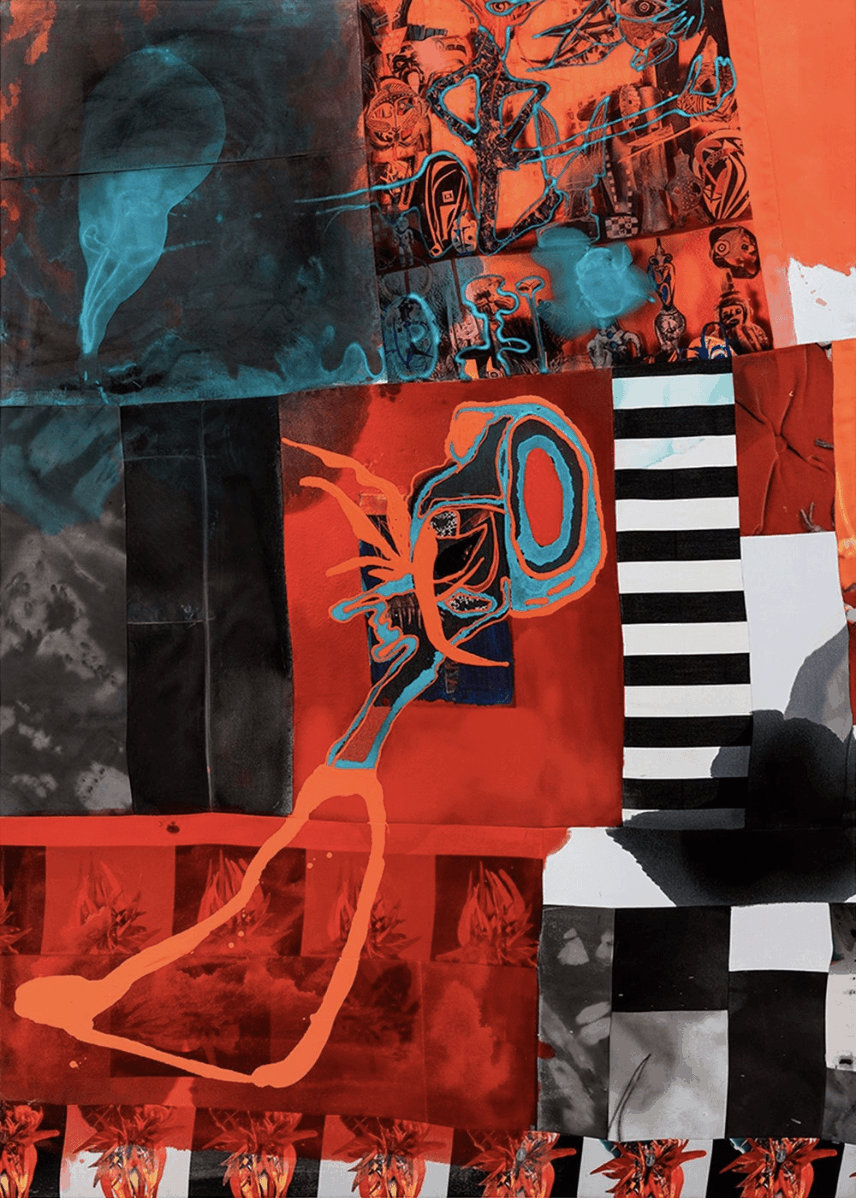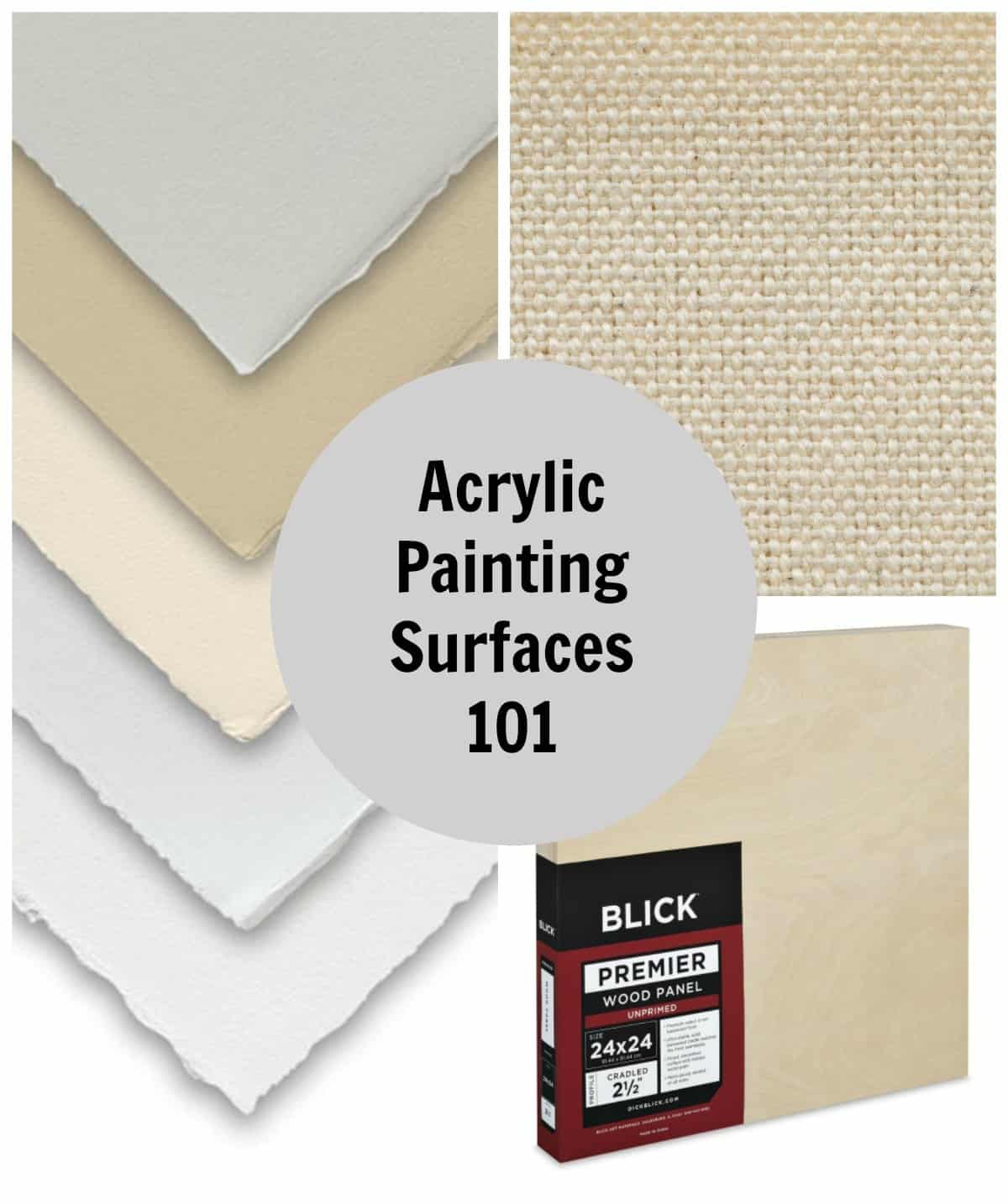Acrylic Painting Surfaces: What to Use? · Craftwhack
I'd like to lead a large raucous cheer right at present for acrylic paint, which is not only my favorite art supply, merely can also be used on veritably any surface you tin think up.
Barring a load of grease or major flaky chips, you can prime whatever surface that acrylics won't stick to on their own and pigment your little center out.
In fact, I've seen acrylics successfully used on:
- paper
- board
- canvas
- ceramic
- glass
- plastic
- wood
- metal
- fabric
- my arms
Using different surfaces with acrylics tin give you vastly varying looks, so if you've seen something you're interested in replicating, or just want to experiment with surface options, continue on reading.
Typical Acrylic Paint Surfaces
These are the substrates most people think of when deciding what to use acrylics on, and are what you will see most acrylic fine art actually on, then we'll start with these and then get into the alternative acrylic surfaces.
Canvas
Canvas is the most common painting surface, and you'll discover all sorts of options if you lot're looking for sail to paint on:
- Pre-stretched Primed Canvas
- Pre-stretched Unprimed Canvas
- Unstretched Primed Canvas
- Unstretched Unprimed Canvas
Some artists similar the expect painting on unprimed canvas gives, every bit the paint soaks into the clothy surface, but many times you volition want to use gesso to seal and ready the surface first.
Gesso gives a nice white surface that acrylic adheres perfectly to, simply isn't besides crazy-absorbent. You can tint it with pigment if you want it to have some colour, sand it smoothen when information technology'southward dry, or brush it on thickly for a textured groundwork.
Another picayune improver to all the canvas options is the fact that you can cull between cotton and linen canvas to paint on. While cotton is cheaper and lighter, linen is less likely to stretch out of shape and has a texture some artists prefer over cotton. read more than most the differences between cotton and linen canvas here.
(I wish I had included this artist in my pointillism post🙂

Wood Panels
These are my Acrylic substrate of choice, as the requite and texture of canvass bulldoze me batty. I normally buy them pre-made, although you can certainly make your own.
They come in all sorts of primed and unprimed surfaces, sizes, and depths, and you lot can hang them by a nail right on the wall, or string center screws and hanging wire across the back.

More Acrylic Painting Surfaces
Newspaper
Y'all know I beloved me some thick printmaking paper for pretty much everything, and acrylics are no exception. Slap a couple of layers of gesso on that stuff and you lot have a great painting surface. (Play around with it unprimed, too.)
Kraft paper and menu stock make interesting newspaper surfaces to pigment on, as exercise rice papers or parchment. Eric Carle's famous illustrations are fabricated using acrylics on tissue paper before he collages them.
This painting by Martha Rich is acrylic and cut paper on paper:

Yupo
Okay, I know pretty much goose egg about Yupo except that it'due south slick and non-porous, and people who use it seem to dear it. I've seen it mentioned as a possible surface for acrylics, so I thought I'd add it on in here in case you want to look into it.
Masonite or MDF
You tin buy masonite and mdf pretty inexpensively if you want to test out difficult surfaces for acrylic before you invest in the cradled panels. Or you might discover you just desire to stick with these surfaces.
Both are pressurized mixtures of wood fibers and glues that make up a woods-like surface, and you lot accept seen these in some cheap piece of furniture.
Always choose untempered masonite, and gesso the front and dorsum to minimize any warping you might get. You tin can also make your own cradled panels by cut 2×iv's to fit the dorsum of your masonite pieces, or buy pre-fabricated gessoed hardboard panels.
And so you lot can go even further by stretching canvas or linen over the front of the whole thing if you want to get totally fancy. (I haven't tried this but my friend John fabricated a lot of paintings using this technique.)
Fabric
Acrylic is super duper on material. We utilise it to brand absurd t-shirts, but you could as well stamp some acrylic designs on pillow cases, paint on silk, like scarves, or even paint on shoes.
Acrylic paint is permanent on fabric, simply is thick and stiff, so will tend to skin off and fade over time, then y'all may desire to utilize material medium with it.
Textile medium mixed with acrylic paint makes it more pliable for fabric y'all are planning to wear or that will be moving around a lot. Try this material medium or GAC 900 past Gilt.
Think to put cardboard in between or nether fabric to protect other layers and surfaces from the paint.

Glass
When I showtime started making acrylic paintings out of college, I would scavenge former paneled windows I plant on the streets of Chicago, gesso up the glass, and paint on them.
I shiver at the thought of painting on glass at present as it'south and then damn breakable, but hey ya, knock yourself out if you lot are feeling the describe of glass equally your surface.
Make sure the glass is cleaned really well first, then wipe information technology off once more with rubbing alcohol, and allow it dry before priming information technology.
As well, don't wear your clown shoes while conveying your paintings on drinking glass or you might trip and autumn on them. I don't know.
Plexiglass
As an culling to glass, y'all can nearly certainly paint on plexiglass if you desire that glass-look without the take a chance of breakage.
Without sanding or scratching up the surface a bit first, plexi is a very slippery surface for acrylics and they can chip off of it at some indicate. I am bold artists who use plexiglass as their acrylic painting surface either have some magical tricks they employ, or they frame out their pieces actually well and then every bit to protect them from bending.
You may want to effort a articulate gesso and/or spray-on articulate sealer with your acrylics every bit an extra precaution.
Yosman Botero: https://www.instagram.com/p/BzwAhZOo9Th/
Ceramics
Yes you can employ acrylic on ceramics!
One of my ceramics professors in college used acrylics to paint his own dirt pieces. If yous want more than control over the colors and color placement than y'all can get with glazes, this makes a lot of sense, since glazes can be incredibly temperamental.
Because clay is all sorts of porous, definitely make sure it'due south primed actually well or your pigment will get way sucked in. I'm certain he sealed the paint over the top of the dirt pieces with something, besides. Effort spray fixative or lacquer on peak and gesso or spray sealer on the bisque-fired dirt.
Acrylic Mediums
These game-changers permit y'all prep all sorts of surfaces for acrylic painting. (Encounter the list at the top, or call up upward your own weird surfaces.) Additionally, Liquitex makes a clear gesso if you lot desire to exist able to see the surface you are painting on. Think: letting some wood grain show through, or painting over a drawing you've done on paper and and then wanted to pigment over while nevertheless seeing the lines.
Traditional gesso or even absorbent ground can exist used for acrylics on paper, canvass, drinking glass, metal, ceramic, wood, boards, and plexiglass.
Feeling overwhelmed? If yous've never tried acrylics earlier and just wanted a quick and easy idea of which surface to choose to begin with, take hold of this pad of canvass paper. It's cheap plenty and so you lot tin play around stress-free, there is a scrap of sheet-like texture to information technology, just information technology lays flat, then it's easier to paint on than stretched canvas. Tape information technology down to a surface with painters record for a border, and take fun!
If you've already tried canvas or newspaper and want to move onto the adjacent level, by all means buy a few cradled boards, and make a modest series of paintings.
Acrylic Surfaces and Supplies
Here are many of the acrylic painting surfaces I mentioned above, and also some more of my favorite tools and goops to use with acrylics.
I almost exclusively buy my supplies from Blick and Amazon, so I'll be linking to whichever site has the amend price and/or the better supply. (Click an prototype to go see more well-nigh it.)
Surfaces
Stretched Cotton Canvas Premier Stretched Cotton Canvas Premier Basswood Panels Sheet Panels Rives BFK Printmaking Paper Yupo Newspaper Ampersand Gessobord Kid's White T-shirts Clear Acrylic Panels
More than Acrylic Supplies Mentioned Above
Aside from all the acrylic surfaces above, I mentioned a bunch of other tools and supplies that you can find links to here.
White Gesso Articulate Gesso Eye Screws Film Wire UV-Resistant Clear Acrylic Spray Absorbent Ground
Hitting me up with questions below, otherwise proceed, git to painting! Y'all may besides similar my acrylic techniques mail to experiment with, or this crazy acrylic skins projection.

hansonverlable1941.blogspot.com
Source: https://craftwhack.com/acrylic-painting-surfaces/
0 Response to "Acrylic Painting Surfaces: What to Use? · Craftwhack"
Post a Comment